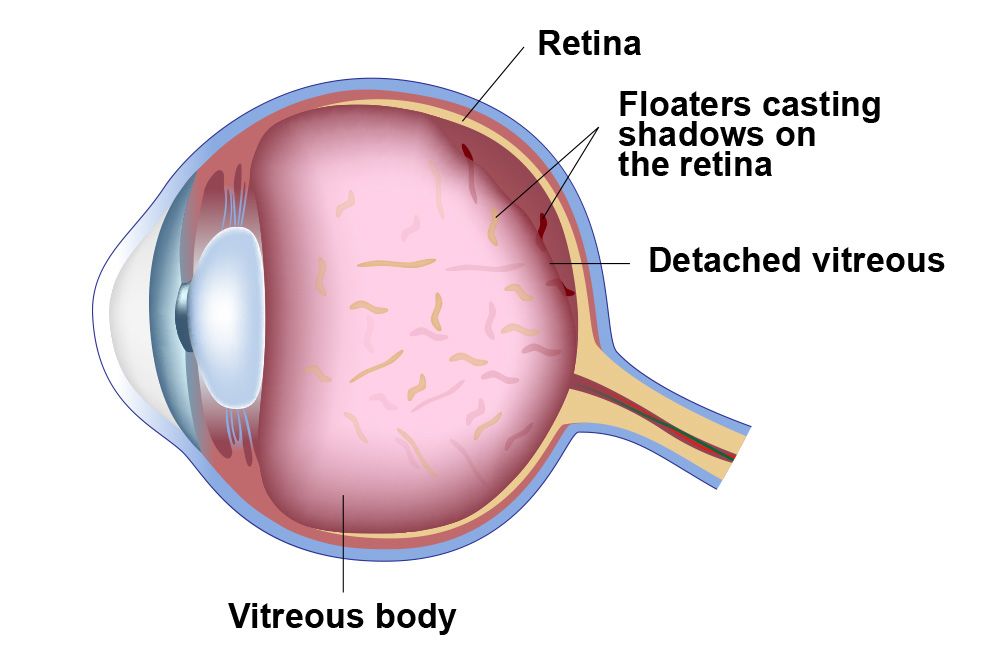Retinal Detachment Treatment Options

The retina is the part of the eye that is light sensitive and sends messages that travel through the optic nerve and into the brain. Certain retinal conditions, such as such as retinal detachment, can lead to permanent vision loss if left untreated. At Retina Associates in Kansas City, MO, our doctors specialize in retinal detachment treatment to prevent permanent vision loss.
What is retinal detachment and who is at risk?
Retinal detachment is a condition in which the retina pulls away from its standard position. While a detachment can result from a retinal tear, it can also result from trauma and other causes. Although this condition can occur to almost anyone at any age, retinal detachments are far more common in men over the age of 40. Other risk factors include:
- Extreme nearsightedness
- Retinal detachment in the other eye
- Family history of retinal conditions
- Prior cataract surgery
- Other eye diseases and disorders
- Previous eye injury
Types of Detachment
There are three types of detachment:
- Rhegmatogenous: This type of detachment occurs when a tear in the retina allows fluid to collect underneath, causing it to separate from the RPE, or the retinal pigment epithelium, which provides nourishment to the retina. This form of retinal detachment is the most common.
- Tractional: Infrequently, when scar tissue on the retinal surface contracts, it can cause the retina to detach from the RPE.
- Exudative: Injury or trauma, other retinal conditions, and inflammatory disorders can all lead to the accumulation of fluid beneath the retina, despite a lack of tears or breaks.
Symptoms of Retinal Detachment
When the retina detaches, you may notice gradual changes to your vision, or they may happen suddenly. The most common symptoms include floaters or specks in the field of vision, flashes of light, and a shadowing over the field of vision.
While we can generally repair retinal tears with laser surgery, traditional surgical methods are often necessary to reattach a retina. We may use one of the three methods, or a combination:
- Scleral Buckling: By attaching a small, synthetic band to the outside, scleral layer of the eye, we can push it against the retina.
- Vitrectomy: A vitrectomy may be used in conjunction with scleral buckling. During this procedure, we create a small incision in the sclera to suction out the vitreous, or the fluid that helps the eye maintain its shape. We replace the vitreous with air or gas, and reattach the retina. As you heal, the gas is absorbed and the vitreal fluid will return.
- Pneumatic Retinopexy: During this procedure, we inject an air bubble to stop fluid from filling beneath the retina. The retina will reattach and the air bubble will be absorbed.
Contact Us Immediately if You Notice Changes in Your Vision
If you notice any changes in your vision, contact Retina Associates right away to schedule an appointment.
